Mood Board:
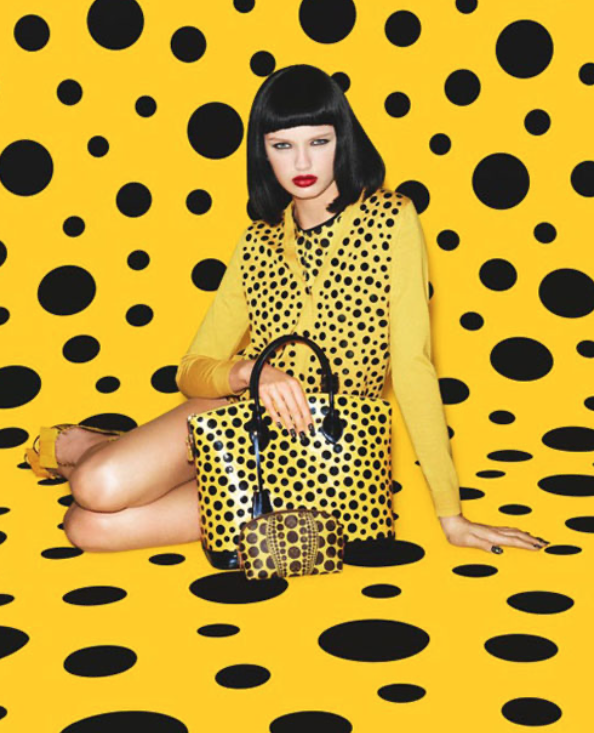
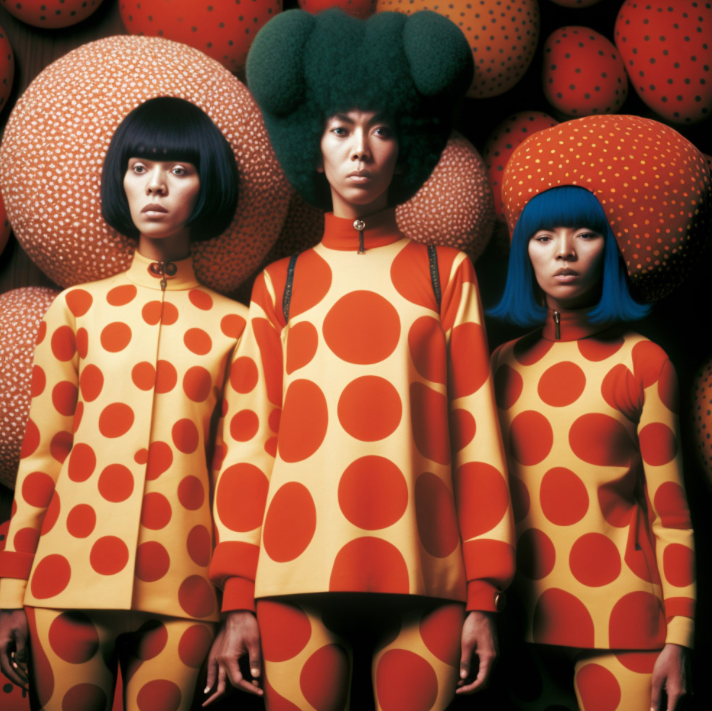
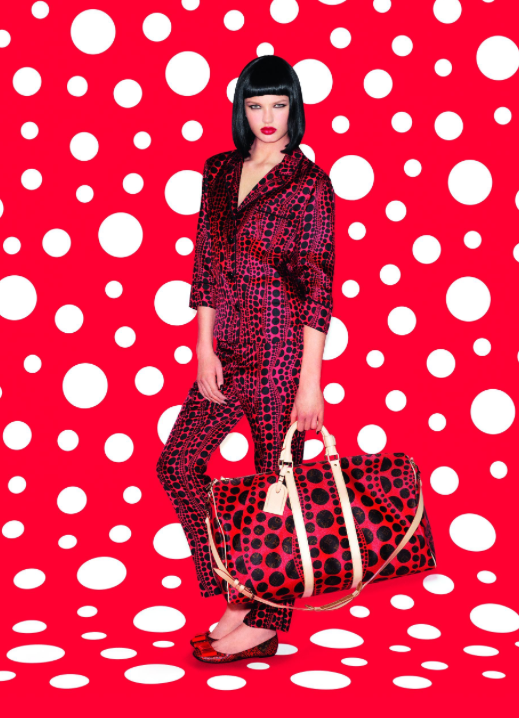
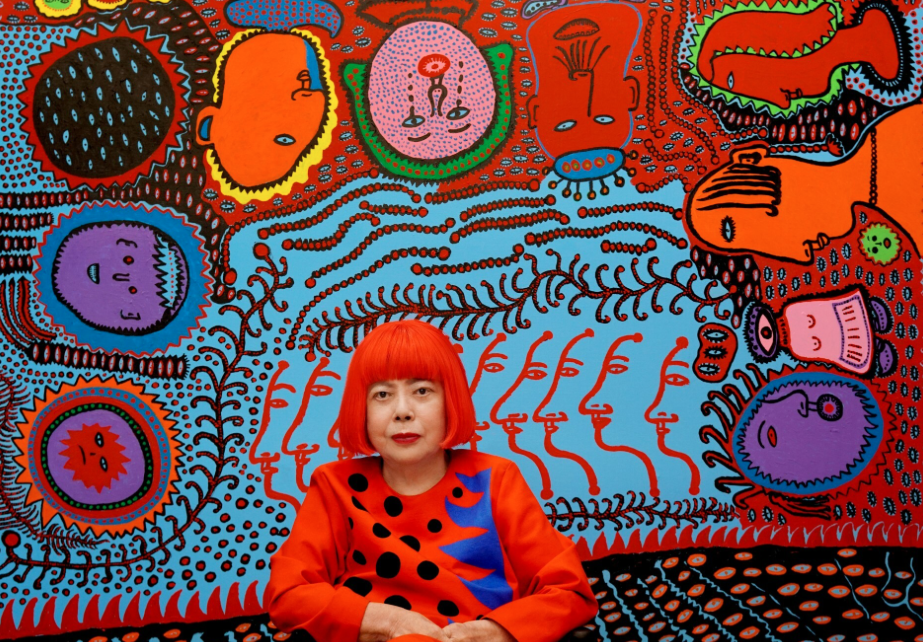
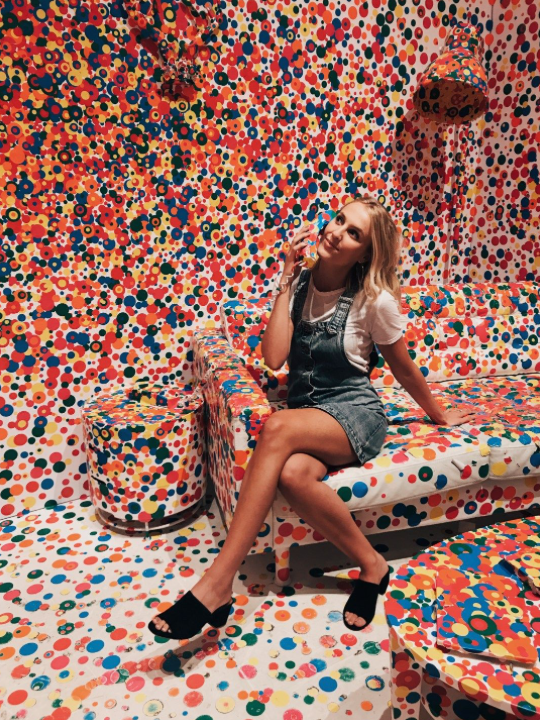
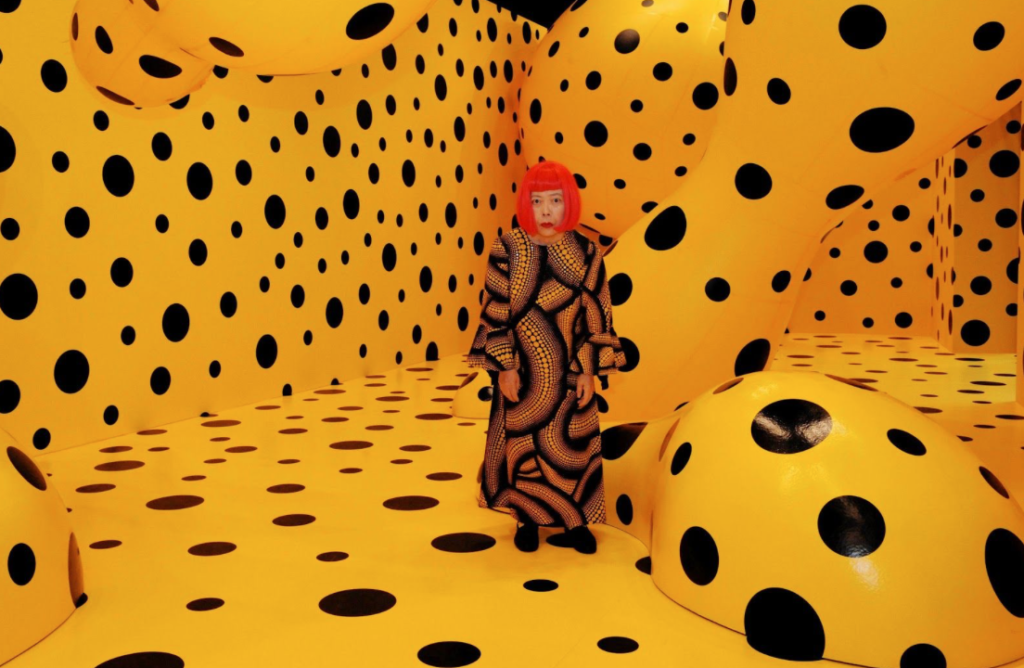
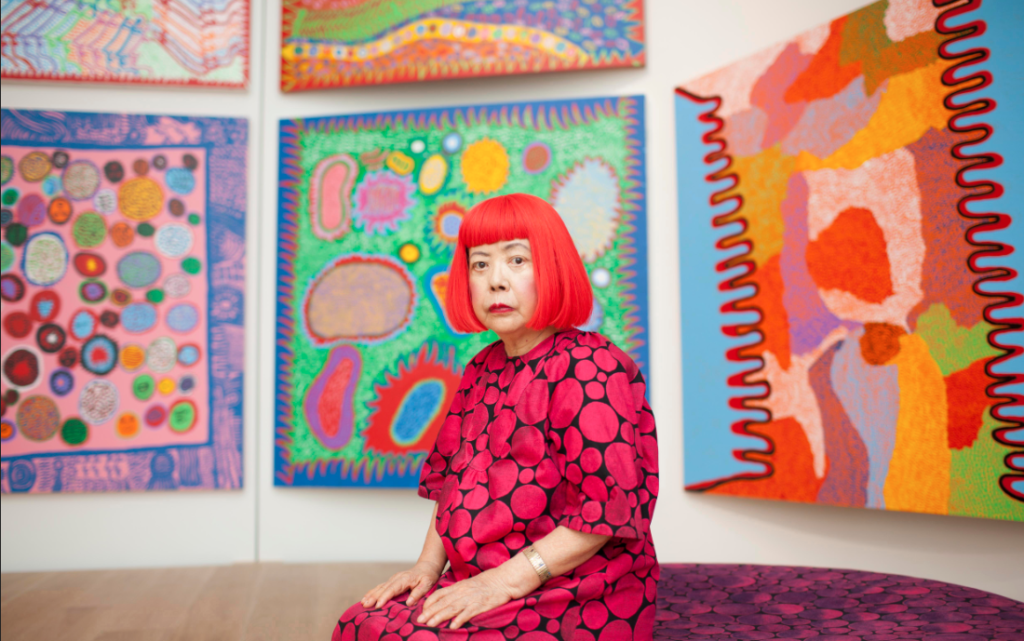
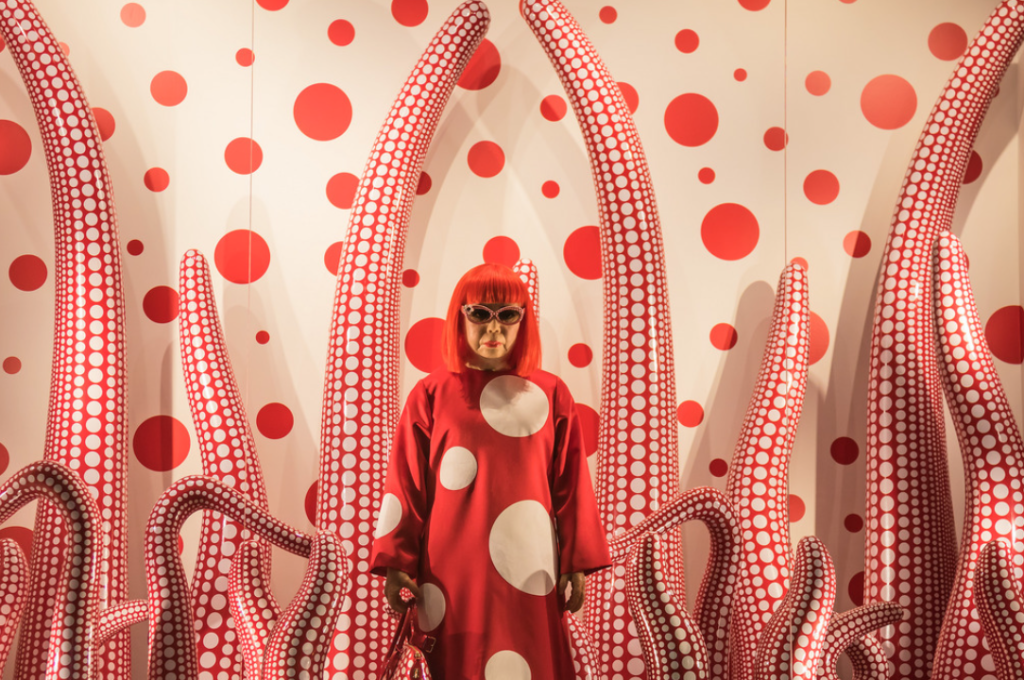
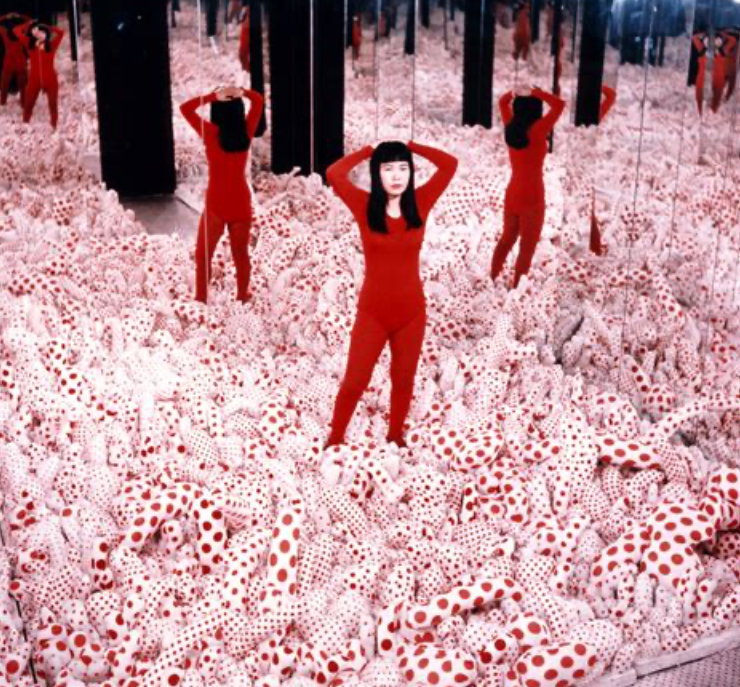
Mind map of Kasuma’s work:

Who is Yayoi Kusama?
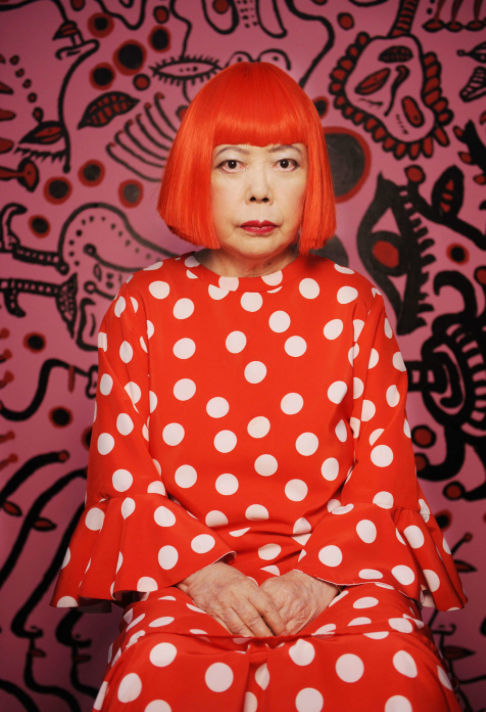
Yayoi Kusama was born on March 22, 1929 and is a Japanese artist known for her distinctive use of repetition and large installations. Kusama’s work is contemporary, as she works across painting, sculpture and performance blending elements of minimalism, surrealism, feminist art and Pop Art. She explores themes of infinity, self-obliteration and mental health, in which she uses her key motifs, such as excessive use of polka dots, to reflect her personality throughout her art.
In an interview with Bomb Magazine, Kusama stated:
“Polka dots symbolise disease.”
This short statement from the artist shows how she reflects her personal struggles into the ways in which she carefully creates her art and portrays it to the world.
Yayoi Kusama explores a unique view, starting with artwork created during her childhood up to works made this year. Her personal expression was shaped by her childhood experiences, including hallucinations that overwhelmed her sense of self. These hallucinations included flowers that spoke to Kusama, and patterns in fabric that she stared at coming to life, a process which she has carried into her artistic career and which she calls “self-obliteration”. She has explained these visions as an obsessional neurosis that has driven her to create art for almost 9 decades. In between, her career is surveyed, from her experimental years in Japan to her contributions to New York’s avant-garde scene in the 1960s, through to her return in 1973 re-emergence as an internationally known artist.
“My art originates from hallucinations only I can see. I translate the hallucinations and obsessional images that plague me into sculptures and paintings.”
– Yayoi Kusama – Interview by Grady T. Turner – January 1, 1999
Yayoi Kusama by Grady T. Turner – BOMB Magazine
Today, Kusama is renowned globally for her use of pattern, colour and symbols to create immersive and and personal works of art that transcend language and borders. She has made significant contributions to key art movements of the 20th and 21st century, including minimalism, Pop Art and feminist art. Although Kusama has experimented with many media and forms of expression, her underlying motivation for making art has remained the same. She seeks to convey the beauty of the natural world, and to further explore her place within an expanding universe of art and photography.
How does Yayoi Kusama’s art link to the theme of union?
Kusama closely explores the theme of union in several ways throughout her pieces, where she emphasises harmony and personal boundaries. As I researched in the interview linked above, Kusama often speaks about self-obliteration, the idea of losing yourself within a larger whole. By covering herself, other subjects and even large rooms in polka dots, she visually represents the merging of the self with the universe. This is an important element for me personally because in this project I want to delve into the theme of identity as it allows for me to self-reflect as well as find relations to my artist inspirations.
Furthermore, Kusama’s infinity mirror rooms create a sense of boundlessness, where reflections discard the separation between herself as the artist, and the viewer. The installations in her work suggest unity, where everything is connected due to the repetition of elements such as patterns and symbols. These factors reinforce the theme of unity as the viewer actively engages with her work through becoming part of the infinite reflections.
Lastly, her anti-war protests that took place in the 1960s due to the Vietnam War promoted peace and collective experience. She painted peoples bodies with dots as a way to symbolise their connection to one another, in attempt to bring a sense of community to the societal troubles occurring at the time.
Why did I choose to study Kusama for my project?
Her work has had a heavy influence on feminism and fashion, where she has collaborated with several major fashion brands. A significant collaboration that stood out to me from viewing her art is her 2012 collaboration with Louis Vuitton. She had originally teamed up with Marc Jacobs, then the creative director of Louis Vuitton to create a collection featuring her signature polka dots on bags, clothing and accessories.
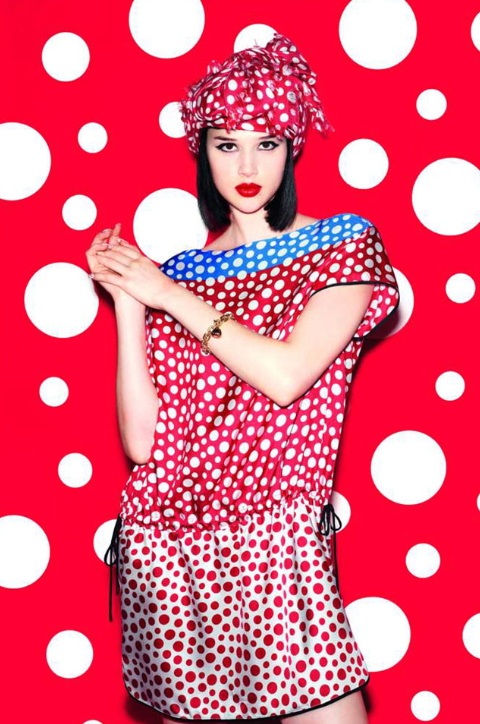
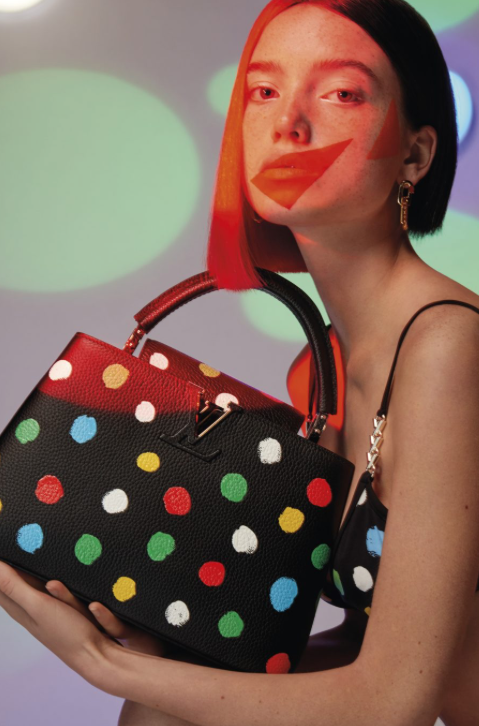

Kusama also intersects with feminism through the challenges she faced in the male-dominated art world. When she emerged in the 1960s New York art scene, it was largely controlled by male artists like Andy Warhol and Donald Judd. Despite being overlooked, she continued to push the boundaries proving that women can succeed in conceptual art. She also delves into the exportation of the body through her Happenings which featured nude performances. These pieces challenged traditional representations of women’s bodies, and highlight her passion towards rebelling against stereotypical norms. This stood out to me due to the extensive use of vibrancy and abstract backgrounds in all of her work. Historically, most classical art favoured muted tones and Kusama rejects these traditional ideals, which signals a break from the past and reinforces growth.
Image analysis:
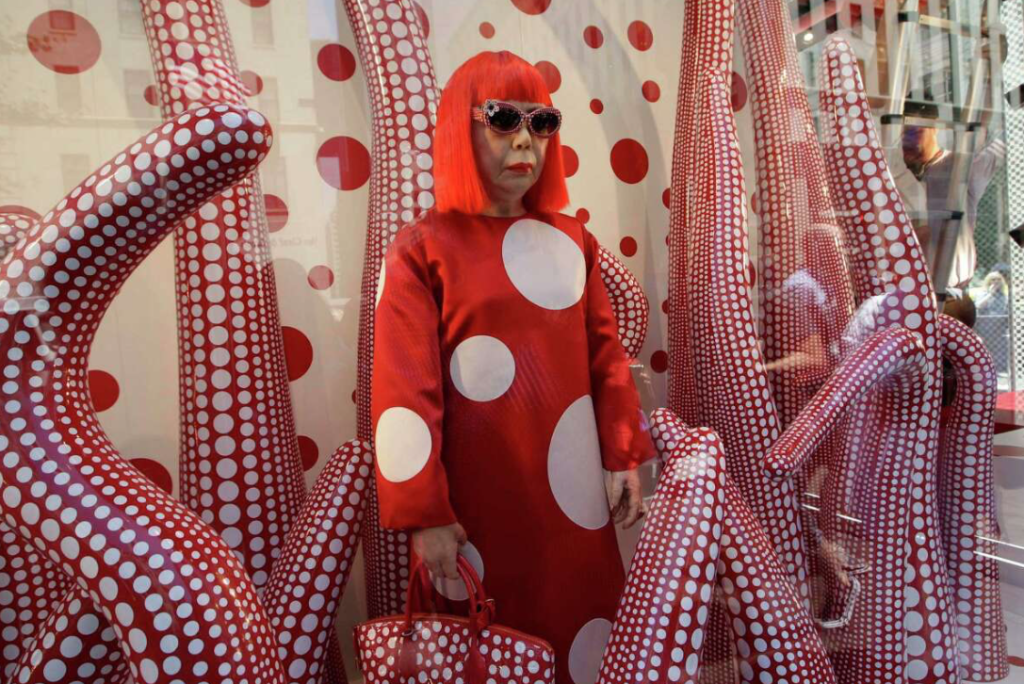

The image above by Yayoi Kusama is a portrait displaying her interests in contemporary photography through using her iconic installations which she is celebrated for. This photo specifically captures many of Kusama’s significant themes such as obsession, identity and self-obliteration in many ways. The image is dominated by an intense red and white colour palette which immediately portrays Kusama’s style of her work using lots of vibrancy. She repeats polka dot patterns throughout the image in her clothing and accessories as well as the background. The use of this successfully blurs any distinction between the artist and the work itself, which is something she aimed to achieve. The main subject in the image is Kusama herself, as she is positioned in the centre of the frame, yet she is almost camouflaged by the intense background. This is due to the repetition of the same patterns, however we can see that Kusama is still the main focus point as there is lots of symmetry used in the image, which allows her to be emphasised against the background. The image as a whole appears to me as surreal, mainly due to the tentacle-like sculptures that dominate the background and surround the artist. The shapes of the tentacles almost introduce a sense of movement, which contrasts with Kusama as we can infer that she is standing still. The repetition of dots on these forms suggest Kusama merging natural life with her psychological state, which allows the viewer to feel more connected with the work by understanding the context and Kusama’s psychological struggles.
The lighting in the image is soft and diffused, allowing for minimal shadows and emphasising the vibrancy of the red colours. Moreover, the use of symmetry throughout the image amplifies the hypnotic quality and forces the viewer to focus on Kusama, as she is placed in the middle of an even background.
As Kusama’s work is deeply rooted from her personal issues and she incorporates these into her images, this shows her lifelong obsession with polka dots and infinite repetition due to her hallucinations. This informs her perspective on self-obliteration where she can discard the boundaries between the self and the world. As well as including herself in the image, she enacts this idea by becoming a part of the infinite visual field created in this image. Additionally, Kusama has included a handbag as an accessory, which directly links to her collaborations with fashion brands, and therefore highlighting the intersection of art with personal identity.
Overall, this image by Yayoi Kusama is a statement that embodies the psychological challenges into her work to reinforce the themes of identity and obsession. By placing herself in the centre of the frame surrounded by colourful polka dots in every aspect, Kusama is emphasising the importance of the nature of identity and the ways in which humans are shaped by the world around us.

